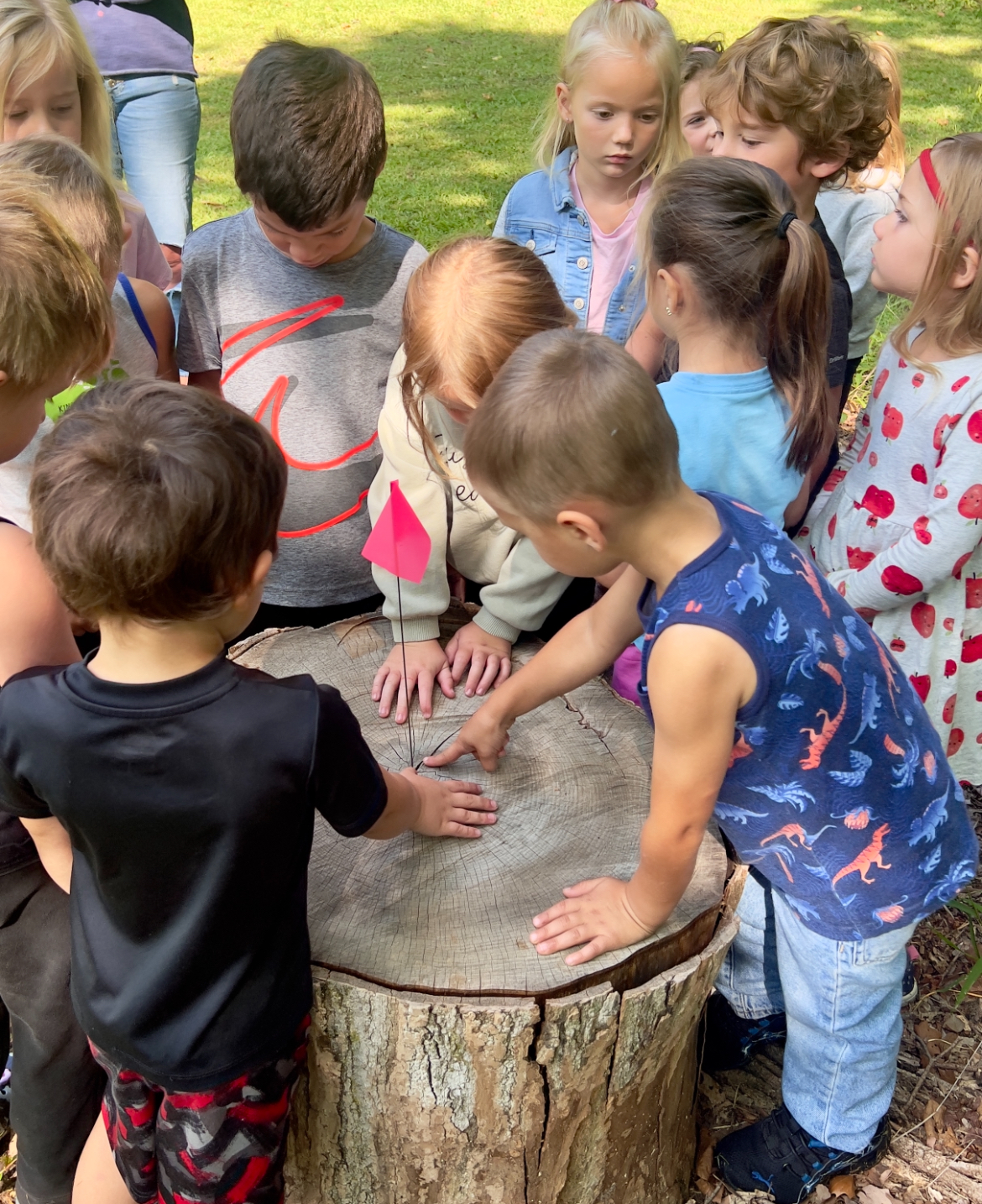There's so much more to learn from tree rings than just the tree's age
There’s so much more to learn from tree rings than just the tree’s age, making it a fantastic nature study opportunity for children! This activity can be done in any season, as you only need a stump or a wood slice.
Before you get started, here are some basics about dendrochronology.
If you want to get fancy, the scientific term for the study of tree rings is “”dendrochronology.”” At its most basic level, this involves dating a tree by counting its growth rings. However, it’s also about studying the data from observing these rings.
How to Count Tree Rings
When examining a tree stump, you’ll notice thin lines and more expansive spaces between the rings. Trees add a new layer of growth every spring and summer. Trees grow much faster during the spring, so the broader spaces represent this spring growth.
In contrast, the summer (and sometimes fall) growth is slower, resulting in thin lines. Together, these two types of markings represent one year of growth. To get an accurate estimate, focus on counting only the thin lines.
What to Look for in Tree Rings and Their Meanings
When examining tree rings, pay attention to their width. If you notice some rings considerably wider than the others, this likely indicates a year with ample rainfall and growth. In contrast, if there are years where the tree rings are particularly thin, this suggests a drought, bug infestation, or some other factor that stunted growth.
Dark, black marks may indicate that the tree survived a forest fire. Additionally, if the rings are wider on only one side of the stump, it might suggest that something pushed against the tree, causing it to develop extra resistance wood on the opposite side.
Once you discover a tree stump or a tree slice, act like detectives and learn as much as you can from the tree rings. Here are some questions to consider:
- How old is this tree?
- Does it look like the tree experienced any sort of injury? (Forest fire, bug infestation, etc.)
- Ask children to make up and tell a story about the tree’s life!
While walking, try to find several different stumps to compare. Look for the oldest tree or the stump with the most unusual shape!
Extending the Learning
I love to pair related books with activities, so we read *The Berenstain Bears and Too Much Birthday.* It has a couple of pages where Papa Bear cuts down a tree, and the cubs count the rings! This was helpful for the three-year-olds, as it aided in understanding the concept and generated excitement about learning.
You can also extend this learning by incorporating the arts as I did. Provide children with small cardstock, markers, and watercolor. Ask the children to draw their observations of the tree rings using these materials.
I loved how the artwork turned out!
This post was written by Stephanie McKinstry of Caterpillar Clubhouse Nature Preschool in Kokomo, Indiana









